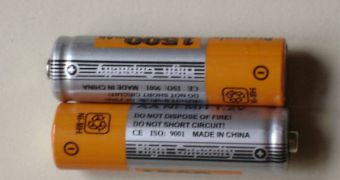Over the past few decades, there have been relatively few improvements in the technology employed in batteries, despite the emergence of lithium-ion cells and other similar devices. However, the capacity has remained roughly the same overall, and a breakthrough in the field has been long sought. Experts at the University of St Andrews, working together with colleagues from Strathclyde and Newcastle, have managed only recently to devise a new type of battery that could potentially represent the technological breakthrough the industry has been waiting for.
The team's efforts, which were funded by the Engineering and Physical Sciences Research Council (EPSRC), have yielded a new type of air-fueled battery, which could potentially be built to store ten times more energy than any existing, conventional design. If the innovation turns out to be sustainable, then, in the near future, we could witness the raise of new classes of electric cars, mobile phones, handheld accessories and laptops, all running on the new type of batteries. In addition to civilian applications, the new devices could be used to benefit the renewable energy industry, which could thus ensure a steady output from sources such as solar panels, geothermal power plants and wind farms.
The lithium cobalt oxide is one of the main constituents of regular batteries today, but it may be rendered obsolete with the emergence of the new devices that will replace it with porous carbon, which uses oxygen drawn from the air during discharge to improve the overall storage capacity. This means that the same size battery could now yield a large capacity. The find will mostly benefit electric car manufacturers, as they have been striving to make their products lighter, while maintaining the same power for a very long time, but with little success.
The new STAIR (St Andrews Air) cells are developed in a four-year project, which will mark half of its running time this June. Already, STAIR is shaping up to be a very serious competitor on the international battery market, and threatens even to cost less than today's rechargeables. University of St Andrews Chemistry Department Professor Peter Bruce, who has also been the principal investigator on the project, said that, “Our target is to get a five to ten fold increase in storage capacity, which is beyond the horizon of current lithium batteries. Our results so far are very encouraging and have far exceeded our expectations.” At this point, the new cells can hold three times the capacity of an existing battery.
“The key is to use oxygen in the air as a re-agent, rather than carry the necessary chemicals around inside the battery,” he added, saying that the oxygen was soaked up from the air inside the porous carbon, and that this process discharged the battery. “Not only is this part of the process free, the carbon component is much cheaper than current technology,” he concluded, explaining that the technology was still approximately five years away from mass implementation.

 14 DAY TRIAL //
14 DAY TRIAL //